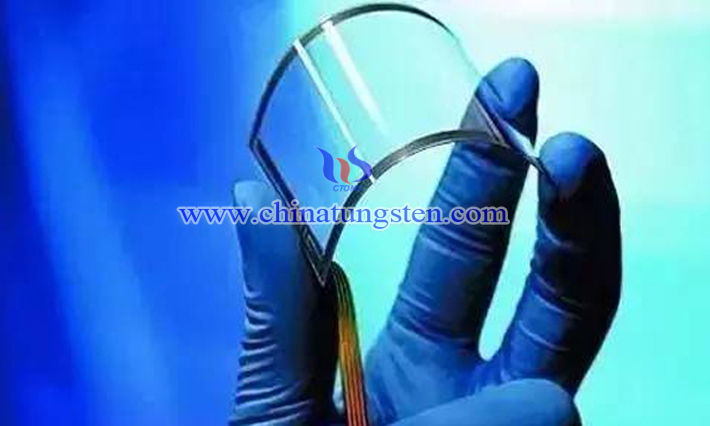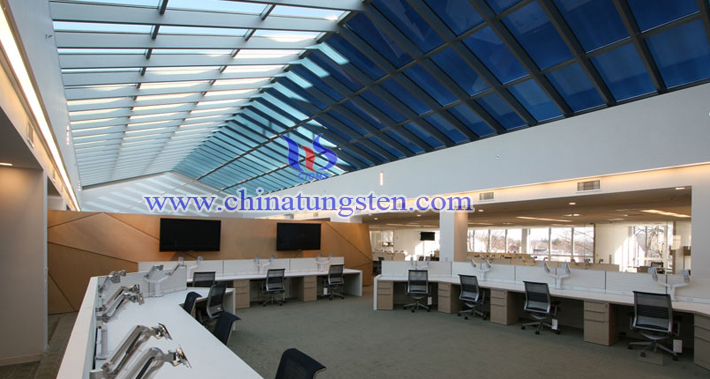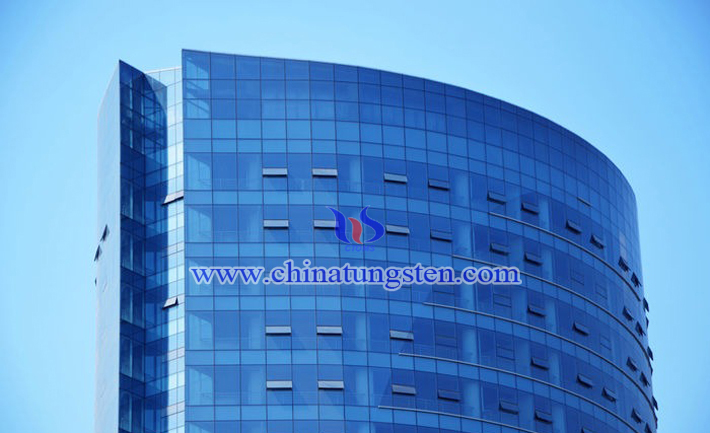Electrochromic Devices Are Listed in Materials Horizons Developed by China
- Details
- Category: Tungsten Information
- Published on Friday, 19 October 2018 10:09
Recently, materials science researchers from Xi'an Jiaotong University, together with Southern University of Science and Technology and Pennsylvania State University, have designed a new electrochromic device with ionohydrogel with novel electrochromic layered structure. The research results have been published in the well-known journal "Materials Horizons" in the field of international materials. This research paper is entitled "Multifunctional Hydrogel Enables Extremely Simplified Electrochromic Devices for Smart Windows and Ionic Writing Boards". The research was supported by the National Natural Science Foundation, the Boxin Project, and the Xi'an Jiaotong University Analysis and Testing Sharing Center.

The novel electrochromic layered structure is obtained by compounding a multifunctional ion hydrogel with a tungsten oxide film. Only this step can effectively simplify the internal structure of the electrochromic device. In addition, ion-hydrogel-based electrochromic devices exhibit significant color changes and up to seventy percent transmittance modulation under periodic biasing. Compared with the traditional electrochromic device, it is found that the response speed and coloring efficiency of the novel electrochromic device are significantly improved. This means that the worldwide problem of electrochromic devices - no discoloration and slow discoloration - has been greatly improved.

Otherwise, researchers have demonstrated a rewritable ion writing pad based on the principle of electrochromic. This design breaks through the limitations of electrochromic display devices that are not erasable. Moreover, the drive voltage is as low as ~1V. This research result is not only important for the design and development of next-generation electrochromic devices. At the same time, it also provides a new way of thinking for the application of ionized hydrogels.

According to records, Newton was found to be gravitationally attracted by the apple. It can be seen that there is always a cause and effect in everything. The birth of new electrochromic devices is also true, and it has its historical background. This is to say that you are familiar with electrochromic materials and electrochromic devices. You know the fact that the structure of traditional electrochromic devices is more complicated. This not only increases the cost of production, but also severely limits the flexibility of the overall design of the device. In particular, the problem that the display content of the conventional electrochromic display cannot be arbitrarily updated after being packaged. Because the display content of such displays has been predetermined by the patterning process of the electrodes or electrochromic layers. It is precisely because of this reason that the scientific research results of "ion hydrogel new electrochromic device" have been obtained.

There are many electrochromic device applications around you, such as smart dimming glass, monitors, and auto anti-glare rearview mirrors. Not to mention the latter two applications, only smart dimming glass, it is gradually replacing LOW-E glass, and is widely used in high-end areas such as hotels, exhibition halls, automobiles, high-speed rail and landmark buildings. So, do you know what these so-called electrochromic devices are?

An electrochromic device is a functional device - a device made of an electrochromic material. So, what is an electrochromic color-changing material? Naturally, it is a material with electrochromic properties. Optical properties such as color and transmittance of electrochromic materials can undergo stable and reversible changes under the control of an external electric field. That is to say, these materials, in appearance, exhibit reversible changes in color and transparency.

Functional devices developed using electrochromic materials have been widely used in smart/energy-efficient buildings, information displays, and defense industries. For example, the Boeing 787 Dreamliner and many architectural glass walls already have applications for electrochromic devices. In the future, with the popularization of this new ion-hydrogel electrochromic device, electrochromic devices will have a wider application prospect. I hope that our country's cute and respectable materials researchers can continue to innovate, let our electrochromic devices go to the forefront of the world, and make our lives better.
- Tungsten Manufacturer & Supplier, Chinatungsten Online: www.chinatungsten.com
- Tungsten News & Prices of China Tungsten Industry Association: www.ctia.com.cn
- Molybdenum News & Price: news.molybdenum.com.cn
- Tel.: 86 592 5129696; Fax: 86 592 5129797; Email: sales@chinatungsten.com



 sales@chinatungsten.com
sales@chinatungsten.com